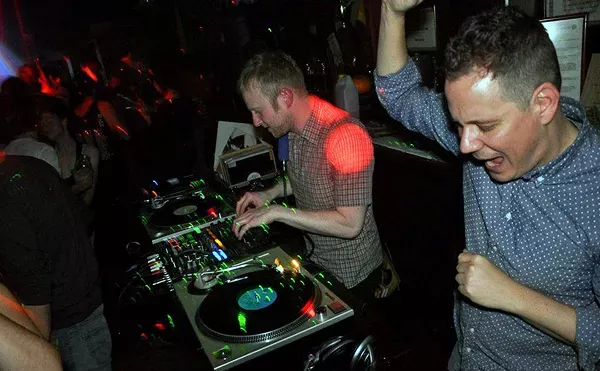The Modern Jazz Quartet
The Modern Jazz Quartet
Wounded Bird Records
The Cry!
Prince Lasha Quintet featuring Sonny Simmons
Contemporary Records
Treasures come to those with patience — like waiting for an hour in the rain to see Sonny Rollins play a sold-out show in Paris or driving all day to Manhattan to hear Andrew Hill at the Village Vanguard. These are the golden memories that fuel a fan’s passion and endurance. And what about those ’50s and ’60s vinyl sides that almost no one’s heard for decades? Veteran ears keep waiting for the CD versions … and sometimes we get rewarded beyond measure.
Like just last week on vacation in NYC, I drop into Tower Records on Broadway in the Village (a temptation I don’t ever resist) and check out the classical section (twice the size of the soon-to-be-history Harmony House Classical), then toodle on over to the jazz department, the real reason my heart goes pitter-pat. Lo and behold and eureka, I find two CD reincarnations of absolute classics from the late-’50s/early-’60s jazz continuum, two long-out-of-print sides that I’d just about lost hope of ever seeing again.
The first of these is titled, quite simply, The Modern Jazz Quartet, by the legendary ensemble of the same name. Originally released by Atlantic in 1957, it represents Milt Jackson, John Lewis and company better than any other set I know of. Jackson (one of the Motor City’s finest products) on vibes and Lewis on piano achieved a rarely equaled interplay, a heavenly collective improv on Tin Pan Alley songs, jazz standards and original compositions in an intricate, almost delicate yet always compulsively swinging flow of ideas — ideas that kept heads bobbing while the minds in them were being taken to hypnotic levels of bop awareness.
Here the quartet starts off with a medley featuring Irving Berlin’s “They Say It’s Wonderful” and “How Deep is the Ocean,” Victor Young’s “My Old Flame” and that North Star of standards, “Body and Soul.” The mood is elegantly pensive with Jackson pouring bell-toned ambrosia over Lewis’ brief but tender chords. Percy Heath on bass and Connie Kay on drums define “rhythm section” as an epitome of sensitivity and gentle pulsation. Rarely have 10 minutes produced such lovely music — and it’s just the opener.
Then track two, “Between the Devil and the Deep Blue Sea,” reveals the foursome’s ultimate intentions, one of which involves a total commitment to swing (as in swing, swang, swung, unh-unh). After Jackson takes the helm to project shimmering sonic architectures into space, Lewis reminds us that modern jazz still has room for Count Basie’s minimalist approach to the joy of cooking. Heath and Kay start from a stroll then settle into a determined groove.
Among the other major moments in this timeless set are a misterioso take on “Night in Tunisia,” with Jackson burning the midnight oil over a rhythm trio that just will not be denied (hear Lewis’ insidious noodling behind him, a solo within a solo). There’s also a perfectly modulated rendition of Jerome Kern’s “Yesterdays” that milks all of the tune’s hesitant sadness and profound recollection; and an unbelievably great version of Jackson’s “Bags’ Groove,” that takes us to the summit of bluesified enlightenment. But why, oh why, did it take Atlantic so long to give up the booty?
Then I come across another long-withheld pleasure: The Cry! by Prince Lasha’s Quintet (featuring his highness on flute, Sonny Simmons on alto sax, Gary Peacock and Mark Proctor on basses, and Gene Stone on drums). This session was recorded in November 1962 — and what a difference five years made in the music. Ornette Coleman had hit the shores of jazz like a shock wave in 1959, with his wailingly interactive quartet (featuring the gorgeous haiku ramblings of Don Cherry on trumpet, the sensuously thick redefinitions of bassist Charlie Haden and the infectious rhythms of drummer Billy Higgins). Lasha’s crew and sound are clearly post-Colemanesque, especially in “the cry” of Simmons’ alto, the double-bass interweavings of Peacock and Proctor, and the airy brashness of Lasha’s flute.
The disc starts off with a bang called “Congo Call,” the two basses in funkified ostinato and the melody tinged with blues à l’Africaine. Simmons cuts the greens with avant-strength mustard, stepping forward to join a revolution that would overturn jazz tradition in the ’60s. Lasha’s tone is thin but appealing, taking an angular route up and down the changes.
The Lasha-Simmons approach also includes more than a tinge of John Coltrane’s modal fire, and on such fascinating thematic material as “Bojangles,” “Green and Gold” and “Red’s Mood” it’s easy to imagine Elvin Jones thrashing on drums, with the rest of Trane’s early ’60s quartet laying down darkly resonant support. So even though The Cry! has a tinge of Coleman-Coltrane-derived hybridity about it, the clear-headed and deep-hearted playing of Lasha and Simmons, Peacock’s wild pizzicato investigations on bass and the general atmosphere of imminent discovery make the session a true keeper.
Next time you’re in the new Tower Records in Birmingham, tell them you’ve just gotta have it (a better classical music selection, that is) and either or both of these nuggets.
George Tysh is the Metro Times arts editor. E-mail him at [email protected]





